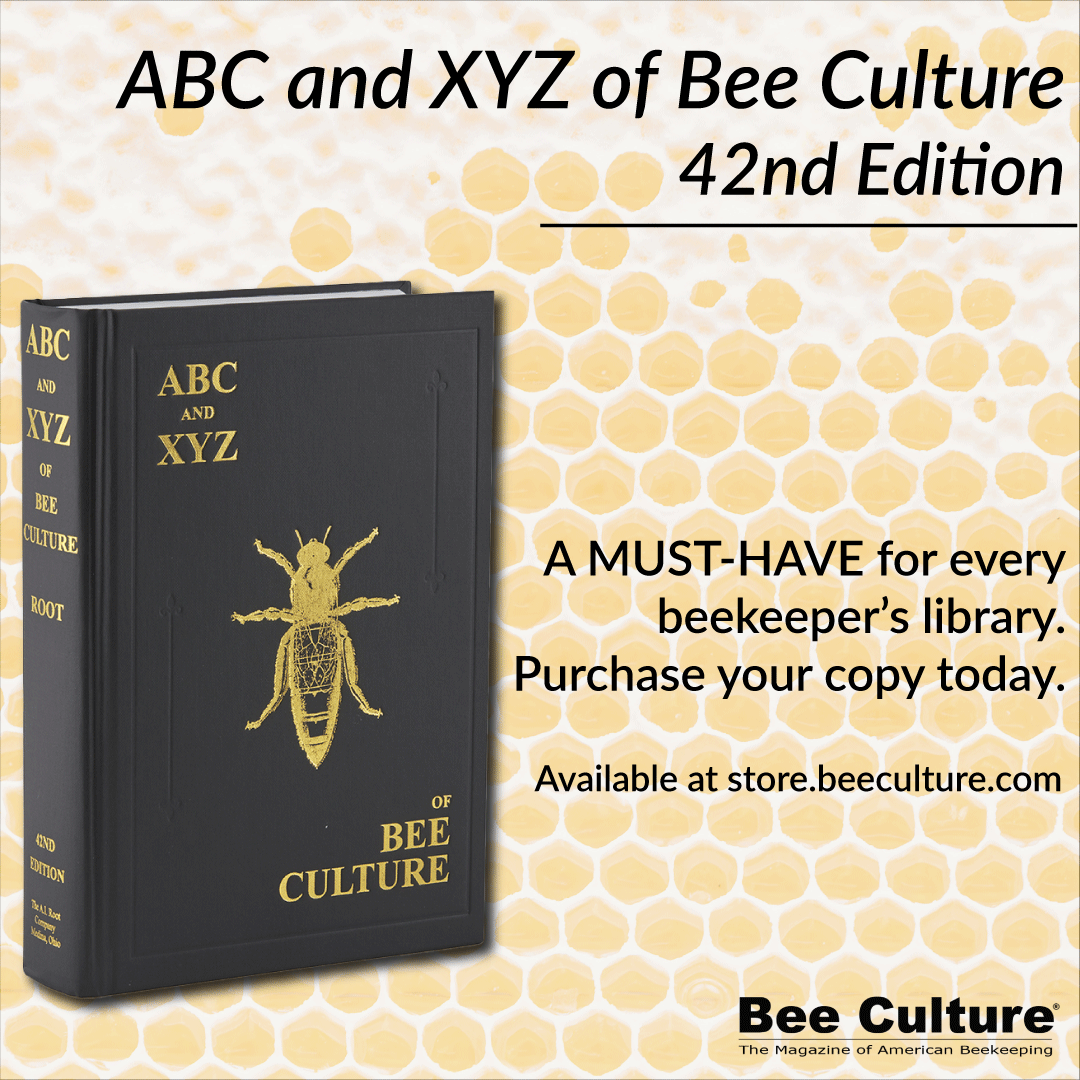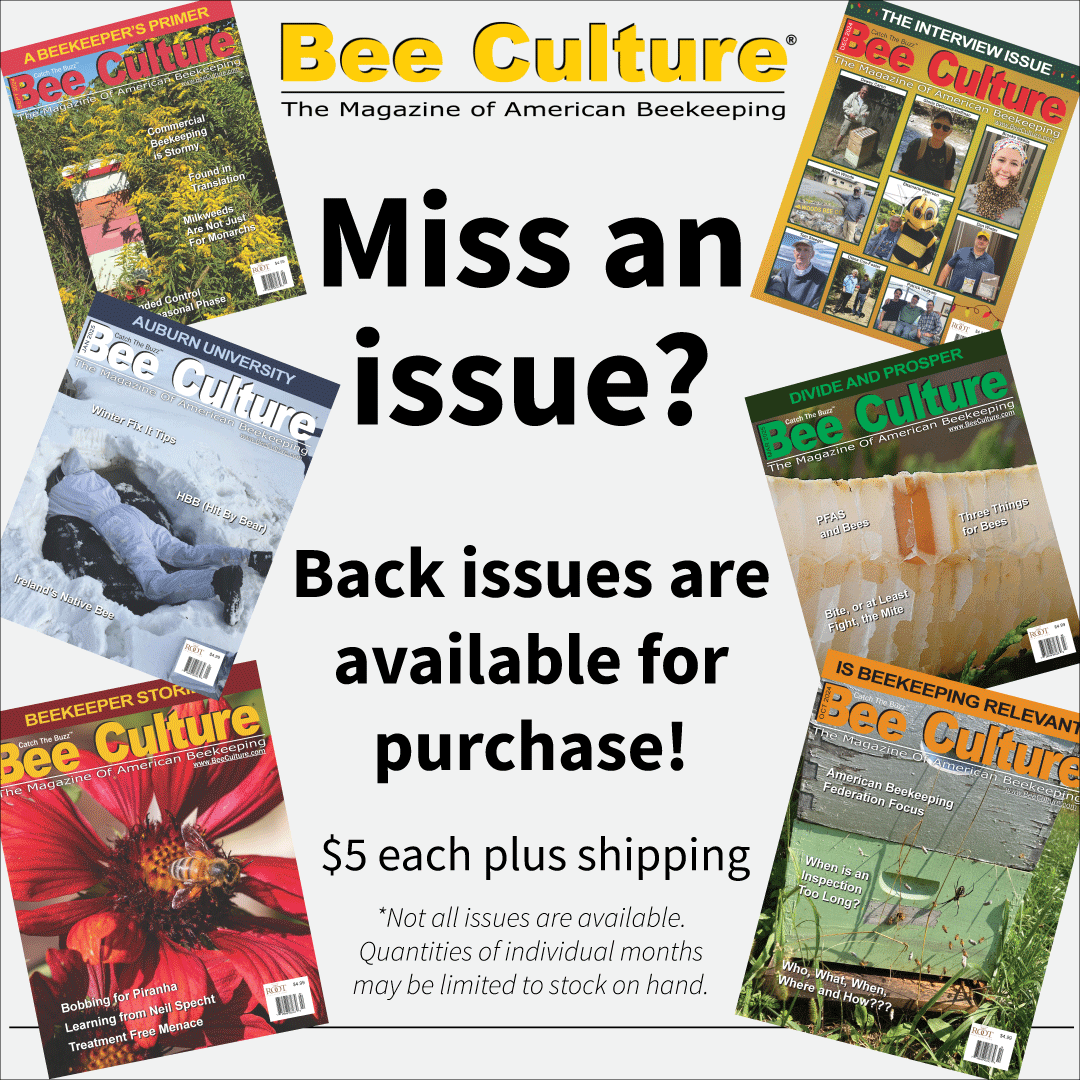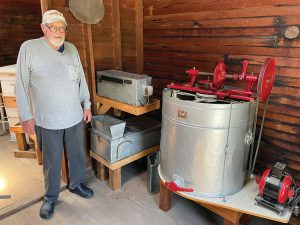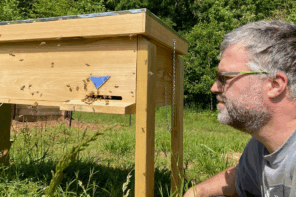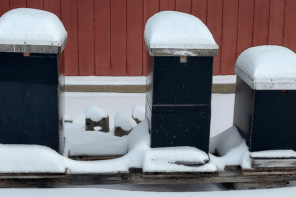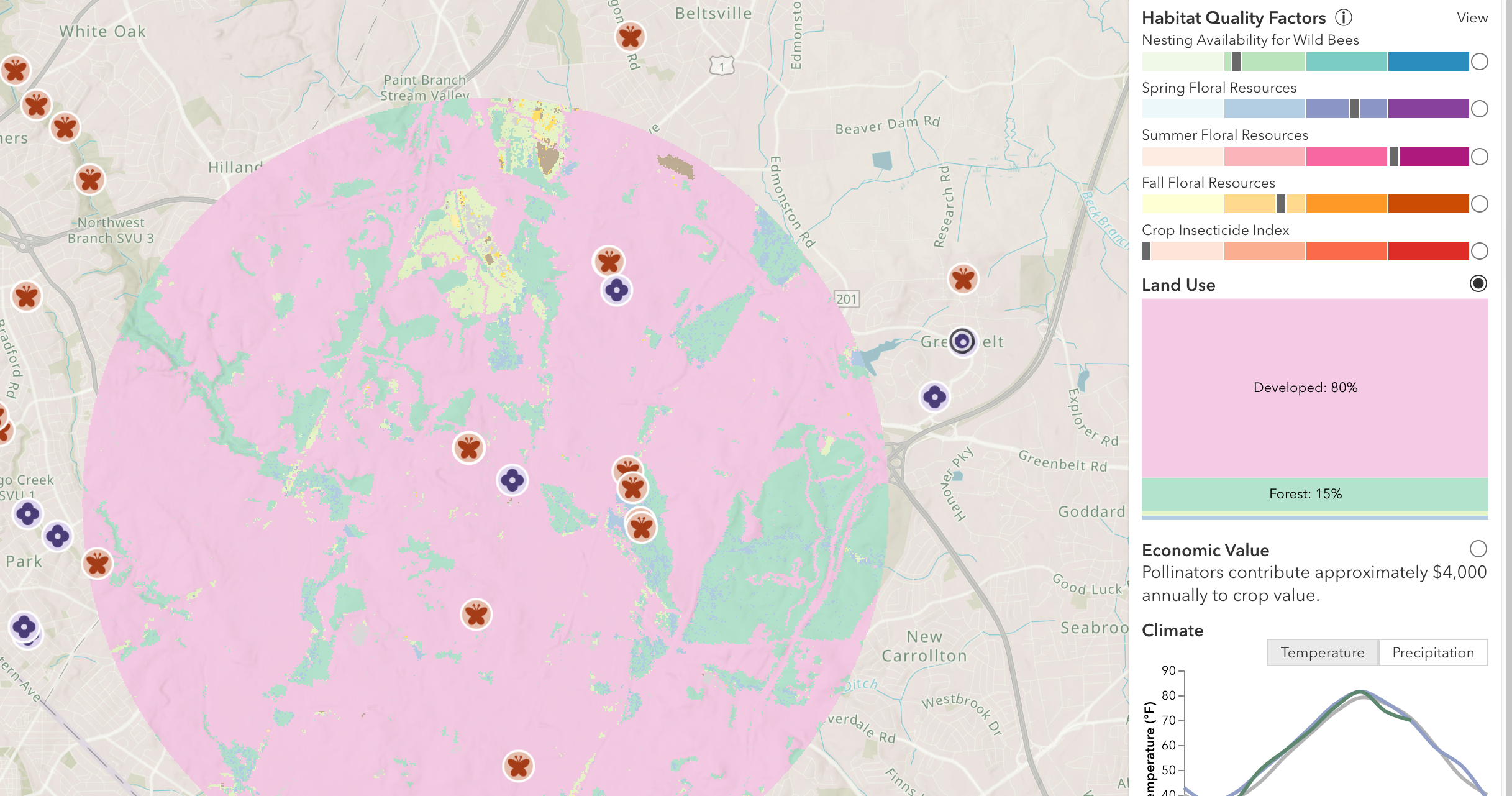Kathryn Thompson
Last Fall, I volunteered to visit with Paul Limbach and Tom Theobald to write some Colorado beekeeping history. The two long-time beekeepers, both in their twilight, had just been granted lifetime memberships to the CO State Beekeepers Association. These beekeepers have been written about before, but as I visited with them, I came to realize the honor it is to have been granted a bit of their time and listen to their stories myself. Something Tom Theobald said to me last Winter has really resonated: “If you want to have say in what goes on in the smoke-filled room, you have to be in the smoke-filled room.” That resonance amplifies as I find more and more people that regularly read Tom’s “Notes from the Beeyard” column published in the Fence Post for nearly three decades.
Tom grew up in Southern Wisconsin with absolute freedom which, he says, “ruined him for adult responsibilities.” As an older kid, Tom was meant to spend the Summer of 1953 with his father in Colorado and after four years, made it back to Wisconsin to graduate high school with his pre-school friends. After attending the University of Wisconsin, Tom worked for IBM for a decade. He found the work interesting, made friends, and was well-compensated for his work, but realized a serious aversion to working indoors. In June of 1975, Tom left IBM. Finding inspiration outdoors in social insects and remembering the “arrow of bees” that issued from hives Tom had once thrown green apples at in a Wisconsin orchard as a child, he casually mentioned that he might like to try beekeeping. Through mutual acquaintances, this led to a meeting with lifelong beekeeper Ted Johnson and his wife. After two hours Tom and his wife Barbara were thoroughly impressed by the passionate beekeepers and wanted some of that zeal in their own efforts. Tom worked honey harvest with another Boulder County, CO, beekeeper, Harlon Henderson. He learned that one could make a living as a beekeeper and when the opportunity to buy half of Ted Johnson’s colonies as Ted began retirement, Tom was fortunate to have Barbara’s support. He started with 40 colonies, bought another 25 new packages, and ended his first season with 100 hives.
Initially, Tom struggled to find profitability in beekeeping and Barbara maintained a full-time job as well as helping in the springtime apiary and honey harvest. In the early 80s Tom began to experiment with double-queened colonies and was able to boost his honey crop and make small-scale beekeeping sustainable off honey production alone. At the time, Tom had no idea he was one of the few that had found that balance with no more than 200 colonies and has recently understood the notoriety his double queen colony management garners. He would move his colonies to catch honey flows to maximize production but kept his colonies primarily in Boulder County and the generally accessible mountains above the front range – including Doudy Draw. While he consistently had hard work to keep up on, Tom loved the feeling of being free and outside for a living and had additional work as a big game guide in the Flat Tops area of the National Forest and gardening. He noted that gardening in CO was a constant effort to “grow dirt” that matched the productive soils he knew in WI.
Over 45 years of beekeeping, Tom has imparted significant knowledge and experience to many beekeepers through his leadership in the Boulder County and CO State Beekeepers’ Associations, as well as mentoring and his involvement in a well-established beekeeper education program through his local association. His reach extends far beyond the beekeeping community, as well. Tom has been vocal about pesticide use as it presents new challenges in beekeeping and worries about what the decline in feral colonies in his area heralds. He served his community of Niwot as it was steered towards small town rather than sprawling city much of the CO Front Range has turned into and has had a long-term and lasting impression on a wide-range of folks in agricultural communities receiving the Fence Post. His “Notes from the Beeyard” column was meant to be a journey through a year of beekeeping and turned into just short of 1400 columns over 27 years covering beekeeping and any manner of topics a beekeeper might contemplate “from the beeyard.” Reaching readers on a personal level and encouraging consideration of the implications of everyday choices – from planting choices to how a lawn might be managed and how that impacts that natural world we depend on.
The importance of showing up goes beyond the smoke-filled room. Beekeepers are like bees. Our collective energy, efforts, and communication determine what we accomplish. But more importantly, people in general notice those that share their thoughts well and with enthusiasm – just as individual members of a swarm respond to scouts that bring corroborating reports or particularly exuberant new reports. Passing flame amongst each other every day, we listen to those we resonate with and those that motivate us to think in new ways.
Acknowledgements: Thank you to Tom Theobald for agreeing to interview for this article and posing for a picture.

